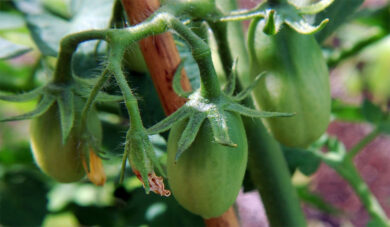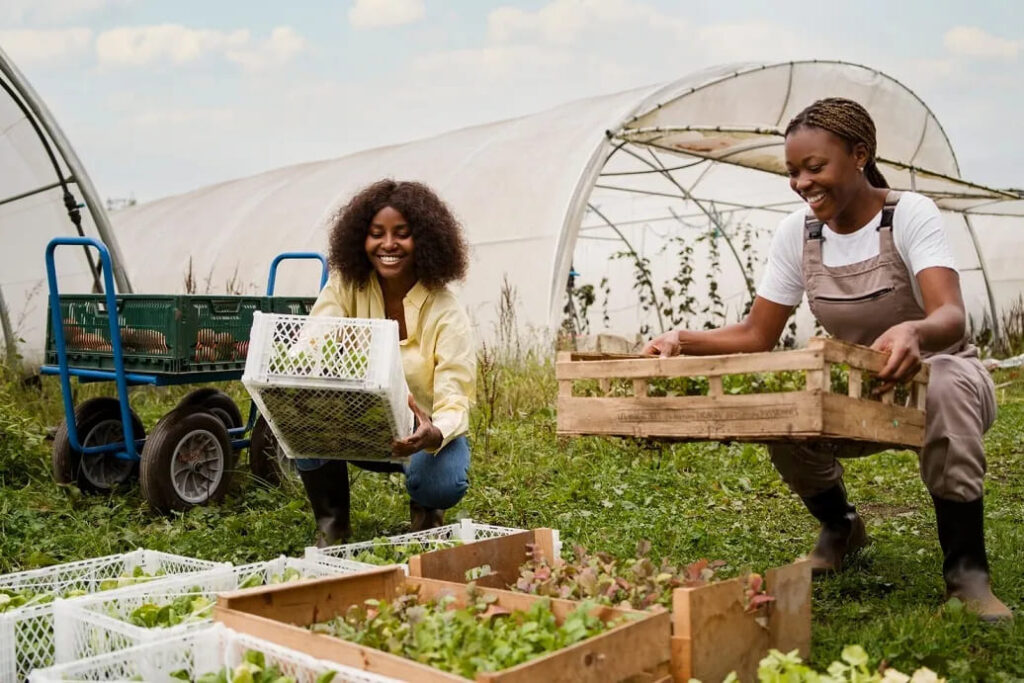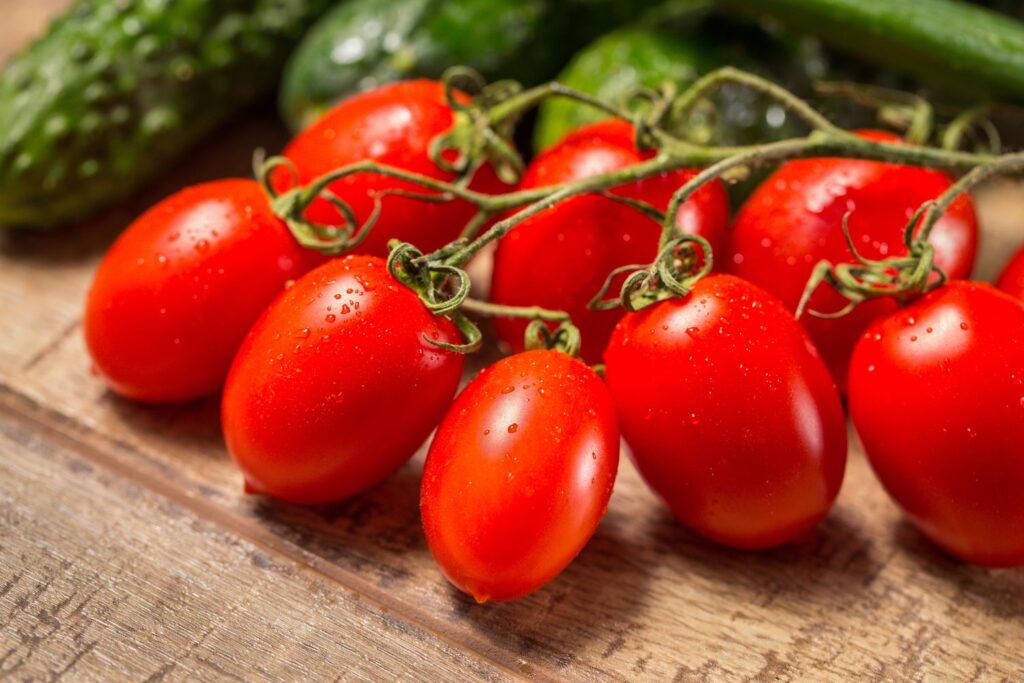Last updated on May 20, 2025
Ever stare at a tiny tomato seedling and wonder, “Just how long do Roma tomatoes take to grow anyway?” It feels like forever sometimes, right? But understanding the typical Roma tomato growth stages and timeline takes a ton of the guesswork out of gardening. Trust me, I’ve been there! Knowing this process helps you plan, care for your plants better, and actually predict when to harvest Roma tomatoes. This guide is for anyone growing these fantastic paste tomatoes, whether you’re a container gardening wizard, a backyard grower, or dealing with specific climates like Florida, the UK, or Australia. Let’s pull back the curtain on the Roma tomato growth timeline!
Why Knowing the Roma Tomato Growth Timeline Matters
Seriously, getting a handle on the timeline is a game-changer. It’s not just about patience; it’s about being prepared. Knowing the stages helps you time things like fertilizing and pest control. Plus, it directly impacts your harvest success and the quality of those beautiful Romas. And who doesn’t want perfect tomatoes for sauce?
Roma Tomato Growth Stages at a Glance
For a quick reference, here’s a summary of the key growth stages and their estimated durations:
| Growth Stage | Estimated Duration |
| Seed to Sprout (Germination) | 5-10 days |
| Seedling Stage | 2-3 weeks |
| Flowering to Ripe Fruit | 20-30 days after flowering |
| Total from Transplant | 75-90 days |
How Long Do Roma Tomatoes Take to Grow? (The Full Journey)
So, the big question: how long do Roma tomatoes take to grow from start to finish? Generally, you’re looking at about 75 to 90 days from the day you transplant a seedling into your garden until you’re picking ripe fruit (Source: University of Maryland Extension). Of course, this isn’t set in stone. Lots of things can speed it up or slow it down. But that’s a solid average to keep in mind.
Let’s break down that timeline a bit more. It’s a journey with distinct phases, each with its own unique feeling for the gardener! And here’s a key difference compared to some other tomatoes: because most Romas are determinate, their harvest tends to be more concentrated. While a big beefsteak or a cherry tomato plant might give you a steady trickle of fruit over a longer season, your Roma harvest is often ready all at once, which is perfect if you’re planning to make a big batch of sauce!
From Seed to Sprout: The Stage of Anticipation
The very first step is germination. This is when that little seed wakes up and sends out a sprout. How long do Roma tomatoes take to grow from seed to sprout? Typically, it takes about 5 to 10 days (Source: Sacred Plant Co).
What to look for: You’ll see a tiny loop or sprout pushing up through the soil. This happens fastest with warm soil. I always use a heat mat when starting seeds indoors; it makes a world of difference!
This is truly the Stage of Anticipation. You’ve done your part, planted the tiny seed, and now you’re just waiting, checking that soil every day, hoping to see that first sign of life. During this crucial germination period, keep the soil consistently moist and warm.
The Seedling Stage: The Stage of Nurturing
After they sprout, they enter the seedling stage. This lasts for about 2 to 3 weeks.
What to look for: This stage begins when the first “true leaves” appear above the initial round, seed leaves. During this time, they grow these true leaves and gain a little height. They’re still pretty small and vulnerable now.
This is the Stage of Nurturing. You’re protecting these little babies, making sure they have everything they need to get strong. Your main tasks here are providing consistent light (ideally 12-16 hours if starting indoors) and gentle watering, being careful not to let them dry out or get waterlogged. Good airflow around seedlings is also important to prevent damping off.
Flowering: The Stage of Hope and Excitement
The next big milestone is flowering. Your Roma plants will start producing those cheerful yellow flowers.
What to look for: You’ll see small yellow buds form, typically at the nodes along the stem, which then open into distinct yellow flowers. This usually happens about 4 to 6 weeks after you’ve transplanted your seedlings into their final spot outside or in a larger pot. Seeing those flowers is exciting! It means fruit is on the way.
This is definitely the Stage of Hope and Excitement! You’ve nurtured them this far, and now you see the promise of your hard work. As flowers appear, ensure your plants are getting enough phosphorus through fertilization to support bloom production.
Fruit Development: The Stage of Watching and Waiting (and maybe a little impatience!)
Once the flowers are pollinated, tiny green tomatoes start to form. This is the fruit development stage.
What to look for:
This stage begins when you see tiny green spheres appearing right behind the wilting flower petals. How long do Roma tomatoes take to grow after flowering until they’re ripe? This phase usually takes about 20 to 30 days (Source: Gardenary). The little green fruits grow larger, then start to change color. It’s like watching magic happen in slow motion!
This is the Stage of Watching and Waiting. You see the fruit, you know it’s coming, but it feels like it’s taking forever to turn red! (Okay, maybe a little impatience creeps in here!). During this phase, consistent watering is absolutely crucial to prevent issues like blossom end rot.
Also, ensure your plants are well-supported with stakes or cages as the weight of the developing fruit increases. Continue with a fertilizer lower in nitrogen and higher in phosphorus and potassium.
How Long Do Roma Tomatoes Take to Grow from Seed?
Starting your Romas from seed is super rewarding. But it does add a few weeks to the overall timeline compared to buying seedlings. How long do Roma tomatoes take to grow from seed to a transplantable size?
If you start seeds indoors, which I highly recommend, you’ll sow them about 6 to 8 weeks before your average last frost date. This gives them plenty of time to grow into sturdy seedlings ready for the garden. When they’re about 6 inches tall and have several sets of true leaves, they’re usually ready to transplant. Remember to harden them off gradually before moving them permanently outdoors!
Starting seeds directly outdoors is possible in warmer climates. But you still need to wait until the soil is warm enough (at least 60°F or 15°C). This means the timeline from sowing to harvest might be slightly shorter than starting indoors, but your plants will be smaller initially.
How Long Do Roma Tomatoes Take to Grow After Flowering?
Okay, the flowers are here! Now, the countdown to harvest begins. How long do Roma tomatoes take to grow after flowering? As I mentioned, it’s generally around 20 to 30 days from when a flower is successfully pollinated and fruit starts to form (Source: Gardenary).
Several things really impact this timeframe. Temperature is a big one. Tomatoes ripen faster in warmer weather. Consistent watering is also crucial. Dry spells followed by floods can stress the plant and mess with ripening. And, of course, good pollination is necessary for the fruit to even start developing! If you notice flowers dropping without forming fruit, poor pollination or temperature stress might be the culprit.
You’ll know a tomato is maturing properly when it reaches its full size and starts to blush or change color from green to red. Patience is a virtue during this stage!
How Long Do Roma Tomatoes Take to Grow in Pots?
Container gardening is fantastic, especially if you’re short on space. But does growing in pots change the growth timeline? How long do Roma tomatoes take to grow in pots compared to in the ground?
Generally, the timeline is pretty similar – still around 75 to 90 days from transplanting. However, potted plants can sometimes grow slightly slower if their needs aren’t met perfectly. The key is providing the right conditions.
You absolutely need a large pot. I’m talking at least 10-15 gallons (approx. 38-57 liters) (Source: University of New Hampshire Extension, Source: UC ANR). This gives the roots enough room to grow and supports a healthy plant. Good quality potting mix is essential too; it drains well and provides initial nutrients.
Potted plants dry out faster than in-ground plants. So, consistent watering is even more critical. You might need to water daily, especially in hot weather. Also, nutrients leach out of pots quicker, so regular feeding with a balanced liquid fertilizer is a must for happy, productive plants. With the right care for your how to care for a Roma tomato plant in a pot, you’ll get a great harvest right on your patio!
Climate-Specific Growth Times: How Long Do Roma Tomatoes Take to Grow in Your Region?
Your local climate plays a huge role in the Roma tomato growth timeline. How long do Roma tomatoes take to grow in USA, the UK, Australia, or other regions? It really varies!
In hot climates, like Florida or parts of the southern USA, tomatoes can grow and ripen quickly. But intense heat can also cause stress and affect fruit set. Gardeners there might focus on varieties that tolerate heat and provide some afternoon shade.
In the UK, summers can be cooler. This means the growth might be a bit slower. Many UK gardeners use greenhouses to provide the consistent warmth tomatoes crave, speeding up the timeline significantly compared to outdoor planting (Source: RHS).
Specific regional challenges can also impact things. For instance, areas with very short summers, particularly in the northern UK or parts of the northern USA, might find the 75-90 day window pushes right up against the first frost. Choosing faster-maturing varieties or starting seeds extra early indoors becomes even more critical there. Conversely, regions in Australia experiencing monsoon seasons might face challenges with excessive rain and humidity, increasing the risk of fungal diseases that can slow down or damage plants, affecting the overall timeline and yield.
The general timeline of 75-90 days is a good starting point. But always check local resources, like your regional agricultural extension office or reputable gardening websites specific to your country, for the most accurate planting calendars and expected growth times.
How Tall Do Roma Tomatoes Grow and When?
Understanding the size of your plants is important for support. How tall do Roma tomatoes grow? Since most Romas are determinate varieties, they typically reach a height of about 3 to 5 feet (approx. 0.9 to 1.5 meters) (Source: UC ANR). They grow to this predetermined height, set their fruit, and then focus on ripening.
They’ll reach their mature height around the time they start setting a heavy load of fruit, usually several weeks after transplanting. Providing support with staking or cages is crucial as they grow. This prevents branches from breaking under the weight of the tomatoes and keeps the fruit off the ground, which helps prevent diseases. Trust me, a plant loaded with Romas gets heavy!
Key Factors That Affect How Long Roma Tomatoes Take to Grow
So, what really makes a difference in that 75-90 day timeline? Several key factors are at play.
- Sunlight: Tomatoes are sun worshippers! They need at least 6-8 hours of direct sunlight daily (Source: UC ANR). Less sun means slower growth and fewer tomatoes.
- Watering: Consistent watering is non-negotiable. Too little, and the plant stresses, slowing growth. Too much, and you risk root rot. Aim for steady moisture. Knowing when to water Roma tomato plants by checking the soil is key. Aim for about 1-1.5 inches (approx. 2.5 to 3.8 cm) of water per week (Source: UF/IFAS Extension).
- Soil: Healthy soil is the foundation. It needs good drainage and plenty of nutrients. A soil test can tell you if your soil needs amendments. Roma tomatoes prefer a pH between 6.0 and 6.8 (Source: Penn State Extension).
- Fertilization: Tomatoes are hungry plants, especially when producing fruit. Following a good fertilization schedule provides the necessary fuel for growth and ripening.
- Temperature: Tomatoes love warmth! Ideal temperatures for fruit set are between 70-85°F (approx. 21-29°C) during the day and 60-70°F (approx. 15-21°C) at night (Source: Purdue University). Extreme heat or cold can slow things down or even stop fruit set.
Tips to Speed Up Growth and Maximize Yields
Want to nudge that timeline along and get the biggest harvest possible? Here are a few tricks of the trade on how to speed up tomato growth and boost your yield.
- Choose Fast Varieties: Some Roma varieties are bred to mature quicker than others. Check seed packets for “days to maturity.”
- Start Indoors: Getting a head start indoors gives you larger, stronger plants to put out in the garden.
- Proper Pruning: Strategic pruning Roma tomatoes helps direct the plant’s energy. Removing suckers (those little shoots in the crotch of branches) encourages the plant to focus on the main stems and developing fruit. This can lead to faster fruiting and larger tomatoes.
- Pinch Early Flowers: As we discussed in another Canvas, pinching off the very first few flowers on young plants can help them put energy into root and foliage development first. This builds a stronger plant that can support more fruit later.
Troubleshooting Delays by Growth Stage
Sometimes, despite your best efforts, your Roma tomatoes might seem to be lagging behind schedule. Pinpointing the problem often depends on the stage of growth where you notice the delay.
My Own “Timeline Glitch” Story
Speaking of delays, I had a year where my Romas were just…stuck. They flowered beautifully, but the fruit stayed tiny and green forever. I was doing everything right, or so I thought! It turned out we had an unusually cool stretch right during the crucial fruit development phase. Those slightly lower temperatures, even though not freezing, just slowed everything down to a crawl. I learned that year just how sensitive tomatoes are to temperature fluctuations, and it reinforced the value of checking daily temps, not just relying on the average timeline. It was frustrating, but a good lesson in patience and observation!
Seedling Stage Delays
If your seedlings are growing slowly, looking stunted, or turning yellow, the issue is likely happening early on.
Problem: Leggy or weak seedlings.
- Why it delays: Insufficient light causes seedlings to stretch and become weak, delaying robust growth needed for transplanting.
- Fix: Provide adequate light (12-16 hours), ideally from grow lights if starting indoors.
Problem: Damping Off.
- Why it delays: This fungal disease attacks seedlings at the soil line, causing them to collapse. It can wipe out young plants entirely.
- Fix: Ensure good air circulation, avoid overwatering, and use sterile potting mix and clean containers.
Problem: Nutrient Deficiency.
- Why it delays: Young seedlings need nutrients to grow. A lack of nitrogen can cause yellowing and slow development.
- Fix: Use a good quality seed starting mix or provide a very dilute liquid fertilizer once true leaves appear.
Flowering Stage Delays
If your plants are growing foliage but not producing many flowers, or if flowers are appearing but dropping off before fruit sets, the delay is happening here.
Problem: Temperature Stress.
- Why it delays: Extreme heat (above 90°F / 32°C) or cold (below 50°F / 10°C) prevents tomato flowers from pollinating effectively, leading to blossom drop and no fruit development.
- Fix: Protect plants from extreme temperatures with shade cloth during heatwaves or row covers during unexpected cold snaps.
Problem: Poor Pollination.
- Why it delays: Even with ideal temperatures, lack of wind or pollinators can prevent pollen transfer.
- Fix: Gently tap or shake plants mid-morning to help release pollen.
Problem: Too Much Nitrogen.
- Why it delays: High nitrogen fertilizers encourage lush leafy growth at the expense of flowers and fruit.
- Fix: Switch to a fertilizer lower in nitrogen when plants begin to flower.
Fruit Development Delays
If your plants have set fruit, but the tomatoes are staying small, green, or taking forever to ripen, the delay is occurring during this final stage.
Problem: Inconsistent Watering (leading to Blossom End Rot).
- Why it delays: Fluctuating soil moisture makes it hard for the plant to take up calcium, leading to blossom end rot on the fruit and essentially ruining those tomatoes, delaying your edible harvest.
- Fix: Water deeply and consistently, especially as fruits develop. Mulching helps maintain even soil moisture.
Problem: Lack of Nutrients (Phosphorus/Potassium).
- Why it delays: P and K are essential for fruit development and ripening. Deficiencies slow down this process.
- Fix: Ensure your fertilizer has adequate phosphorus and potassium once fruit has set.
Problem: Extreme Heat.
- Why it delays: While warmth helps ripening, extreme, prolonged heat can sometimes slow down the final ripening process or cause sunscald.
- Fix: Provide afternoon shade during intense heatwaves.
Problem: Pests or Diseases.
- Why it delays: Stressed plants fighting off pests or diseases divert energy away from fruit development and ripening.
- Fix: Regularly inspect plants and address pest or disease issues promptly using appropriate methods.
When and How to Harvest Roma Tomatoes: The Stage of Reward!
The best part! Knowing when to harvest Roma tomatoes is key to getting that perfect flavor and texture, especially if you’re planning to make sauce or paste. What to look for: Beyond just turning a deep, uniform red color, a perfectly ripe Roma for processing will feel firm but give slightly when you gently squeeze it (Source: The Produce Moms). It shouldn’t be hard like a rock, but definitely not mushy either – think “firm with a little give.” Another great sign is how easily it detaches from the vine; a ripe Roma should twist or tug off with minimal effort (Source: The Spruce). Some gardeners also swear by smelling the stem end; a ripe tomato will have a subtle, sweet, “tomato-y” fragrance (Source: The Kitchn). This is the Stage of Reward! All your hard work has paid off, and you get to enjoy the delicious fruits (literally!) of your labor.
- Color is Your Cue: Romas are ready when they turn a deep, uniform red.
- The Squeeze Test: They should feel firm but give slightly when gently squeezed – the “little bounce back” is what you’re after!
- Ease of Detachment: A ripe Roma should come off the vine easily with a gentle twist or tug.
- Smell the Sweetness: A subtle, pleasant tomato fragrance near the stem end can also indicate ripeness.
- To Pick Early or Not? Should you pick Roma tomatoes before they turn red? Yes, you can! Picking when they start to blush allows them to finish ripening indoors, protecting them from pests and cracking (Source: University of Maryland Extension). While vine-ripened is often preferred, picking at the blushing stage and letting them finish indoors is a perfectly valid strategy, especially with Romas destined for cooking.
- Cut, Don’t Pull! Should you cut or pull tomatoes off the vine? Always cut! Use clean snips or scissors to avoid damaging the plant.
Your Personal Gardener’s Log: Tracking YOUR Roma Timeline
While this guide gives you a solid framework for how long do Roma tomatoes take to grow, remember that your specific garden’s microclimate is unique! Things like slight variations in temperature, the exact amount of sun your plants get, and even your soil composition can shift the timeline a bit.
That’s why keeping a simple gardener’s log is a fantastic idea! Grab a notebook or use a gardening app. Note down when you planted your seeds or transplanted seedlings, when you first saw true leaves, when the first flowers appeared, when you saw tiny green fruits, and finally, when you harvested your first ripe Roma. Over time, this will give you a personalized timeline for your garden and your specific Roma variety. It’s super empowering and helps you become an even better gardener!
Consider sharing your Roma timeline in the comments below! It’s fascinating to see how much variation there is even within the same region, and your experience could be incredibly helpful to other growers.
Frequently Asked Questions (FAQs)
Here are some common questions about the Roma tomato growth timeline:
How long does it take for Roma tomatoes to grow from seed to harvest?
Generally, it takes about 75 to 90 days from transplanting a seedling until you can harvest ripe Roma tomatoes. If starting from seed indoors, add another 6-8 weeks for seedling growth before transplanting.
How long after flowering do Roma tomatoes take to ripen?
Once a Roma tomato flower is pollinated and fruit begins to form, it typically takes about 20 to 30 days for the fruit to ripen.
How long do Roma tomatoes take to grow in pots compared to in the ground?
The overall timeline is usually similar, around 75-90 days from transplanting. However, potted plants might grow slightly slower if not given a large enough container, consistent watering, and regular feeding.
How tall do Roma tomato plants get?
Most Roma varieties are determinate and typically grow to a height of about 3 to 5 feet (approx. 0.9 to 1.5 meters).
What are the signs that a Roma tomato is ripe for harvesting?
Look for a deep red color, a texture that is firm but gives slightly when squeezed, ease of detachment from the vine, and potentially a subtle, sweet fragrance near the stem end.
Can I pick Roma tomatoes before they are fully red?
Yes, you can pick Roma tomatoes when they are blushing or starting to turn pink. They will continue to ripen indoors, which can help protect them from pests or cracking on the vine.
What are common reasons for delays in Roma tomato growth?
Delays can be caused by issues like insufficient light (seedling stage), temperature stress or poor pollination (flowering stage), or inconsistent watering, nutrient deficiencies, pests, or diseases (fruit development stage).
Conclusion
Growing Roma tomatoes is incredibly rewarding, and understanding their growth timeline makes the journey smoother and more successful. From the tiny seed to that bountiful harvest, each stage has its needs. By providing consistent care – the right sunlight, water, nutrients, and support – you’re setting your plants up for success. Don’t forget to research local conditions and potential pests or diseases specific to your area. Now, go forth and grow some amazing Romas! What stage are your tomatoes at right now? Share your experiences in the comments below!

I’m Oladepo Babatunde — farmer, research writer, and the person behind AgricBusiness.com.ng.
I started farming back in 2007, not in some classroom or lab, but on a small piece of land while still in secondary school. Since then, I’ve raised poultry, planted cassava, made mistakes, figured stuff out, and kept going.
This blog isn’t theory. I write based on what I’ve done, what I’ve seen go wrong, and what’s actually working — especially for small-scale farmers in Nigeria. I also dig into data, trends, and research to give you practical advice that fits our local conditions.
If you’ve ever Googled something like “how many bags of feed for 100 broilers” — yeah, I’ve been there too. That’s why this site exists.




